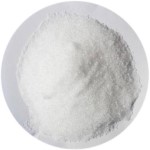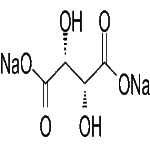CAS Number 868-18-8 and 6106-24-7, Sodium Tartrate Dihydrate Anhydrous USP NF FCC Food Grade Manufacturers Exporters







CAS Number 868-18-8 and 6106-24-7, Sodium Tartrate Dihydrate Anhydrous Manufacturer Exporter
For Properties Specifications of Sodium Tartrate Dihydrate Anhydrous Click Properties, Specifications of Sodium Tartrate Dihydrate Anhydrous Manufacturer.
For Uses of Sodium Tartrate Dihydrate Anhydrous Click Uses of Sodium Tartrate Dihydrate Anhydrous Manufacturer.
For For SDS MSDS Sheet of Sodium Tartrate Dihydrate Anhydrous Click SDS Safety Data Sheet MSDS Sheet of Sodium Tartrate Dihydrate Anhydrous Manufacturer.
The Properties and Specifications of Sodium Tartrate Dihydrate Anhydrous:
Specifications of Sodium Tartrate USP NF Grade
C4H4Na2O6-2H2O --- 230.08
Disodium L-tartrate.
Disodium (+)-2,3-dihydroxybutanedioic acid CAS Number 868-18-8
Sodium Tartrate contains not less than 99.0 percent and not more than 100.5 percent of C4H4Na2O6.2H2O, calculated on the dried basis.
Identification:
A: Responds to the tests for Sodium .
B: Responds to the tests for Tartrate.
pH: between 7 and 9 (1 in 10 solution).
Loss on drying: Dry it at 150 for 3 hours: it loses between 14.0% and 17.0% of its weight.
Heavy metals: 0.002%.
Limit of oxalate: Dissolve 1.0 g of Sodium Tartrate in 10 mL of water, then add 5 drops of diluted acetic acid and 2 mL of calcium chloride: no turbidity develops within 1 hour. Not more than 0.1% is found.
Sodium Tartrate FCC Food Grade Specifications
Disodium Tartrate; Disodium L-Tartrate
NaOOCCH(OH)CH(OH)COONa-2H2O or C4H4Na2O6-2H2O
Formula weight 230.08
INS: 335 CAS Number 868-18-8
DESCRIPTION
Sodium Tartrate occurs as transparent, colorless crystals. It is the disodium salt of L(+)-tartaric acid. One gram dissolves in 3 mL of water. It is insoluble in alcohol. The pH of a 1:20 aqueous solution is between 7 and 9. Upon ignition, it emits the odor of burning sugar and leaves a residue that is alkaline to litmus and that effervesces with acids.
Function: Sequestrant.
REQUIREMENTS
Identification: A sample gives positive tests for Sodium and for Tartrate.
Assay: Not less than 99.0% and not more than 100.5% of C4H4Na2O6 after drying.
Lead: Not more than 2 mg/kg.
Loss on Drying: Between 14.0% and 17.0%.
Oxalate: Passes test (limit about 0.1%).
The Uses of Sodium Tartrate Dihydrate Anhydrous:
Sodium tartrate is a white, crystalline powder, used as an emulsifier and a binding agent. It can be used in jellies, cheeses, sausage casings and many other foods. It is used as an emulsifier and a binding agent.
The MSDS-SDS Hazard Statement of Sodium Tartrate Dihydrate Anhydrous:
Sodium Tartrate SDS GHS, Safety Data Sheet
MSDS Sheet, Material Safety Data Sheet 28-Jan-23
Section 1: Chemical Product and Company Identification
Product Name & Other Names: Sodium tartrate or Disodium tartrate or Disodium (+)-2,3-dihydroxybutanedioic acid.
CAS Number: 868-18-8 (also 6106-24-7)
EINECS EC Code: 212-773-3
Chemical Formula: NaOOCCH(OH)CH(OH)COONa-2H2O or C4H4Na2O6-2H2O.
Molecular Weight: 230.08
Relevant uses and uses advised against (if any): Industrial Manufacturing
Section 2: Hazards Identification
GHS, Globally Harmonized System Classification in accordance with 29 CFR 1910
Classification according to Regulation (EC) No 1272/2008
Not a hazardous substance or mixture according to Regulation (EC) No. 1272/2008.
This substance is not classified as dangerous according to Directive 67/548/EEC.
Labeling according to GHS & Regulation (EC) No 1272/2008
GHS Label Elements NONE |
Signal Word: None
Precautionary statements:
P261: Avoid breathing dust/fume/gas/mist/vapors/spray.
P262: Do not get in eyes, on skin, or on clothing.
P281: Use personal protective equipment as required.
P302+P352 - IF ON SKIN: Wash with plenty of soap and water.
P304 + P340 - IF INHALED: Remove victim to fresh air and keep at rest in a position comfortable for breathing.
P305 + P351 + P338 - IF IN EYES: Rinse cautiously with water for several minutes. Remove contact lenses, if present and easy to do. Continue rinsing.
P337+313: If eye irritation persists get medical advice/attention.
Section 3: Composition and Information on Ingredients
Product Name & Other Names: Sodium tartrate or Disodium tartrate or Disodium (+)-2,3-dihydroxybutanedioic acid.
CAS Number: 868-18-8 (also 6106-24-7)
EINECS EC Code: 212-773-3
Section 4: First Aid Measures
Always seek medical advice after the first aid treatment.
Skin: Rinse with water. Soap may be used. Seek Medical Aid.
Eyes: Wash eyes with plenty of water for at least 15 minutes, lifting lids occasionally. Seek Medical Aid.
Inhalation: Remove to fresh air. If not breathing, give artificial respiration. If breathing is difficult, give oxygen.
Ingestion: If swallowed, induce vomiting immediately after giving two glasses of water. Never give anything by mouth to an unconscious person.
Notes to Physician: Treat symptomatically.
Section 5: Fire and Explosion Data
Flammability of the Product: Non-flammable.
Flash Points: Not applicable.
Products of Combustion: Sodium oxide, Fumes and Oxides of carbon.
Fire Fighting Media and Instructions: Use water spray, alcohol-resistant foam, dry chemical, or carbon dioxide.
Special Information: In the event of a fire, wear full protective clothing and NIOSH-approved self-contained breathing apparatus with full face piece operated in the pressure demand or other positive pressure mode. At high temperatures under fire conditions, it may produce toxic or irritating fumes. Fire-extinguishing work is done from the windward and the suitable fire-extinguishing method according to the surrounding situation is used.
Section 6: Accidental Release Measures
Personal precautions, protective equipment, and emergency procedures: Avoid breathing dust/fumes/gas/mist/vapors/spray. Use individual protective equipment (waterproof boots, suitable protective clothing, safety glasses, etc.). Do not approach facing the wind.
Environmental precautions: Do not let the product enter drains, soil, or water sources.
Methods and materials used for containment Cleanup procedures and Storage: Do not inhale dust, vapors, mist, or gas. Avoid dust formation. Contain spilled material. Cover with an inert, non-combustible absorbent material, (e.g. sand, earth, diatomaceous earth, vermiculite). Use a shovel to put the material into a convenient waste disposal container.
Section 7: Handling and Storage
Precautions for safe handling: Apply according to good manufacturing and industrial hygiene practices. Ensure proper ventilation. In case of insufficient ventilation, wear suitable respiratory equipment. Wash thoroughly after handling. Do not drink, eat, or smoke while handling. Avoid contact with skin, eyes, and clothing. Minimize dust generation. Avoid breathing dust/fumes/gas/mist/vapors/spray. Keep container tightly closed. Avoid ingestion and inhalation. Use individual protective equipment (waterproof boots, suitable protective clothing, safety glasses, etc.).
Conditions for safe storage, including any incompatibilities: Store in cool, dry, and ventilated area away from heat sources and protected from sunlight in tightly closed original container. Keep air contact to a minimum. Store protected from heat, sparks and ignition sources and incompatible materials. Avoid contact with skin and eyes. Avoid inhalation of dust/mist/vapor. Do not store with incompatible materials like strong oxidizing agents and acids.
Section 8: Exposure Controls/Personal Protection
Exposure Guidelines: This product does not contain any hazardous materials with occupational exposure limits established by the region specific regulatory bodies.
Engineering Controls: Use process enclosures, local exhaust ventilation, or other engineering controls to keep airborne levels below recommended exposure limits.
Ventilation System: A system of local and/or general exhaust is recommended to keep employee exposures as low as possible.
Personal Respirators (NIOSH Approved): For conditions of use where exposure to dust or mist is apparent and engineering controls are not feasible, a particulate respirator may be worn.
Skin Protection: Wear protective gloves and clean body-covering clothing.
Eye Protection: Use chemical safety goggles and/or full face shield where dusting or splashing of solutions is possible. Maintain eye wash fountain and quick-drench facilities in work area.
Other Control Measures: Maintain good housekeeping in work area. Handle in accordance with good industrial hygiene and safety practice.
Section 9: Physical and Chemical Properties
Physical state and appearance: Solid white to off-white crystals powder or granules.
Odor: Odorless.
Odor threshold: Not available.
pH (5% soln/water): 7-9.
Relative density: around 1.82
Melting Point: 170 to 175C.
Initial boiling point and boiling range: Not available.
Flash point: Not available.
Auto-ignition temperature: Not available.
Decomposition temperature: Not available.
Upper/lower flammability or explosive limits: Not available.
Vapor pressure: Not available.
Vapor density: Not available.
Evaporation rate: Not available.
Flammability (solid, gas): Not available.
Partition coefficient: n-octanol/water: Not available.
Solubility: Soluble in water.
Viscosity: Not available.
Section 10: Stability and Reactivity Data
Stability: It is stable.
Conditions of instability: Incompatible materials.
Incompatibility with various substances: Heat, strong oxidizing agents, acids.
Polymerization: Will not occur.
Section 11: Toxicological Information
Toxicity to Animals: No data available.
Carcinogenicity: No component of this product present at levels greater than or equal to 0.1% is identified as possible or confirmed human carcinogen by IARC, ACGIH, OSHA and NTP.
Mutagenic Effects: Not available.
Developmental Toxicity: Not available.
Reproductive Effects: No information available.
Section 12: Ecological Information
Toxicity to fish: No information available.
Persistence and Degradability: This substance/mixture contains no components considered to be either persistent, bioaccumulative and toxic (PBT), or very persistent and very bioaccumulative (vPvB) at levels of 0.1% or higher.
Section 13: Disposal Considerations
Waste Disposal: Waste must be disposed of in accordance with federal, state, and local environmental control regulations.
Section 14: Transport Information
DOT USA, TDG Canada & ADR/RID Europe: Not controlled.
IMDG/IMO: Not controlled.
IATA: Not controlled.
Section 15: Other Regulatory Information
USA Regulations:
SARA 311/312 Hazards: See section s.
California Proposition 65: Not listed.
DISCLAIMER: The information and recommendations set forth herein (hereinafter "Information") are presented in good faith and believed correct as of the date hereof. It is compiled from various sources and it is not necessarily all inclusive nor fully adequate in every circumstance. In addition, these suggestions should not be confused with nor followed in violation of applicable laws, regulations, rules or insurance requirements applicable. This MSDS sheet is intended only as a guide to the appropriate precautionary handling of the material by a properly trained person using this product. Individuals receiving the information must exercise their independent judgment in determining its appropriateness for a particular purpose.
Anmol Chemicals & Pharmaceuticals Pvt. Ltd. is an off-shoot of Anmol Chemicals Taloja. It is located in MIDC Taloja and it is manufacturing pharmaceutical grades of API, Excepients, Food grade and Reagent grade chemicals. Anmol Chemicals & Pharmaceuticals Pvt. Ltd. is a several decades old group of companies, engaged in manufacturing, supplying, distributing, wholesale supplies for actual users, retail or small pack supplies for research and development chemicals, fine and speciality chemicals, pharmaceutical excipients, mineral fortifiers in chemically pure, Analytical reagent grade, IP BP USP Ph Eur EP JP and other pharmaceutical grade monograph including FCC Food grade chemicals and Nutraceuticals, Mineral Fortifiers at best prices.

Sodium Tartrate Dihydrate Anhydrous Structure
CAS Number 868-18-8 and 6106-24-7, Sodium Tartrate Dihydrate Anhydrous Manufacturer Exporter
ANMOL CHEMICALS & PHARMACEUTICALS Pvt. Ltd.
India, USA, Europe, UAE
TELEPHONE: +912223770100
Navi Mumbai, INDIA
e-mail: info(At the rate i.e. @)anmol.org
Copyright. 28-jan-23
We manufacture:
Glacial Acetic Acid Manufacturer

